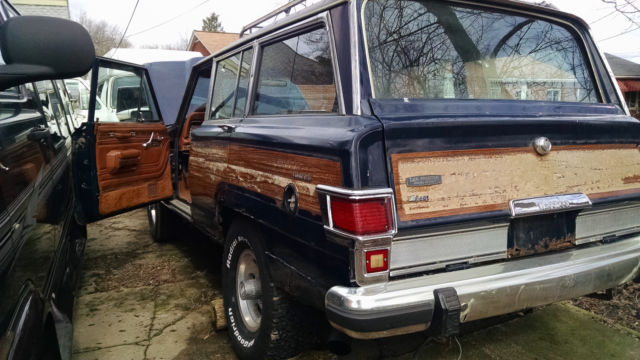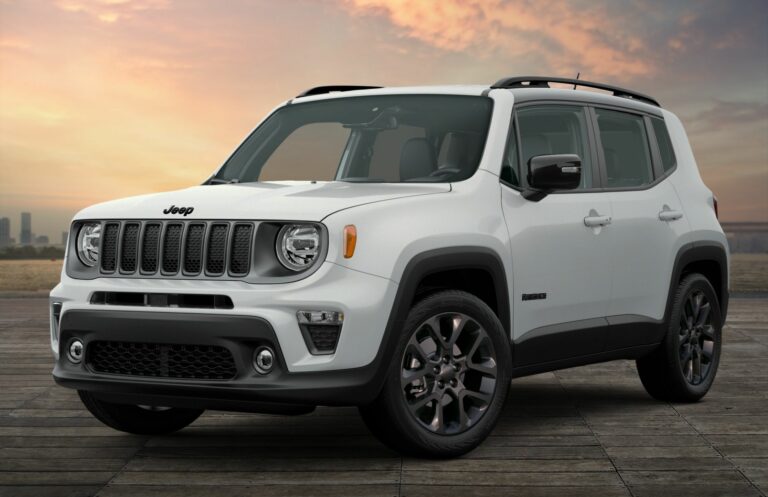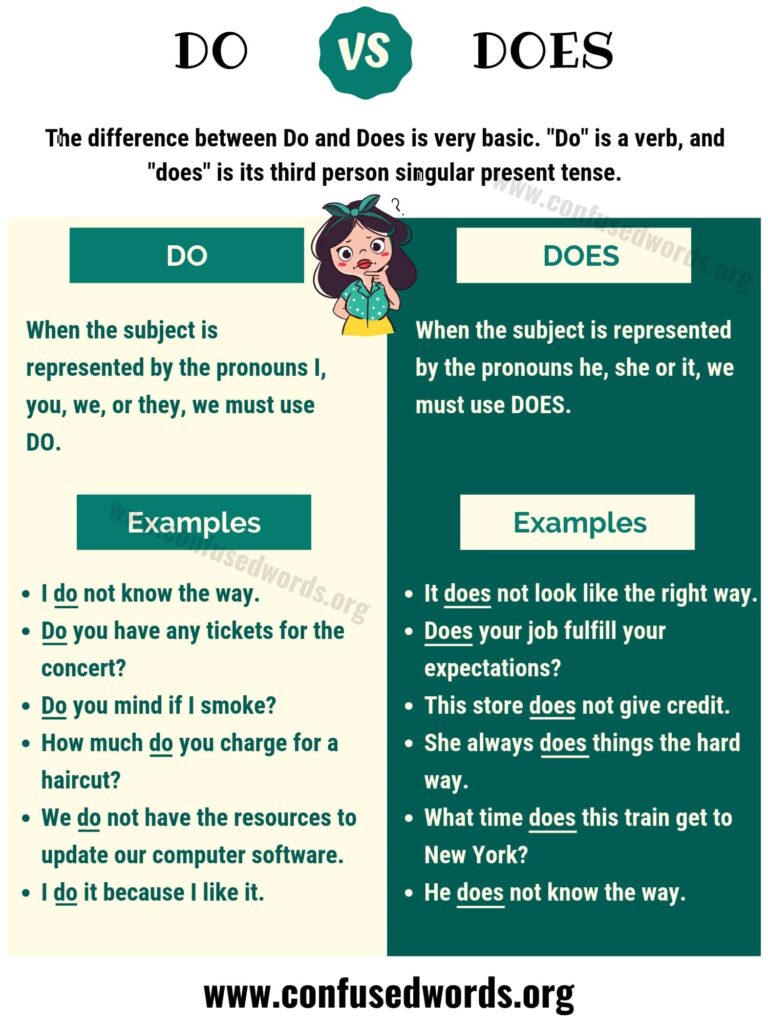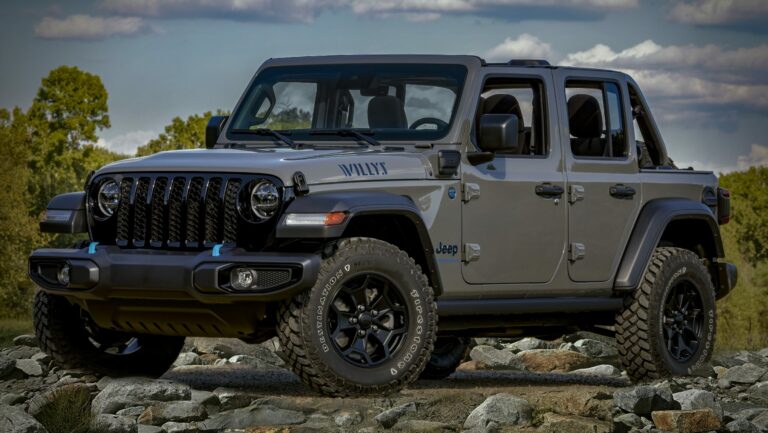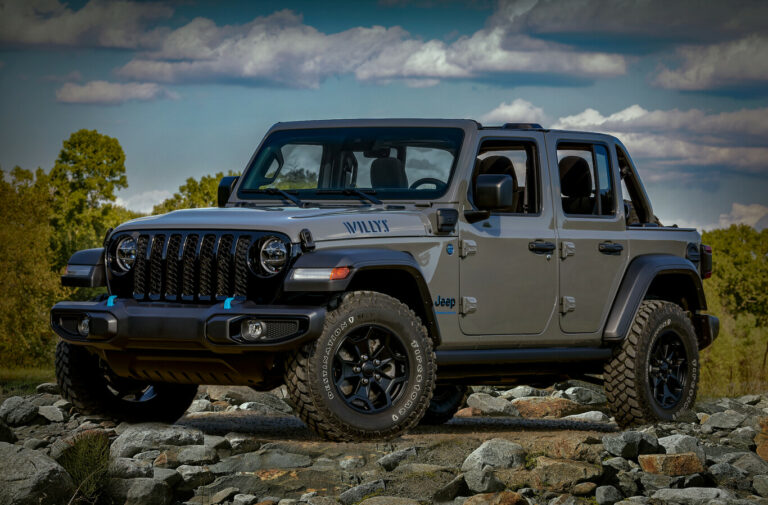1983 Jeep Wagoneer For Sale: A Comprehensive Buyer’s Guide
1983 Jeep Wagoneer For Sale: A Comprehensive Buyer’s Guide jeeps.truckstrend.com
In the realm of classic American automobiles, few vehicles command the same nostalgic reverence and enduring appeal as the Jeep Wagoneer. Before the advent of modern luxury SUVs, there was the Wagoneer – a pioneering blend of rugged utility, family-friendly space, and surprising refinement. Among its storied lineage, the 1983 Jeep Wagoneer holds a special place. It represents the culmination of decades of design and engineering evolution, standing as a testament to American automotive ingenuity just before the "Grand Wagoneer" moniker officially took hold. For sale today, a 1983 Jeep Wagoneer isn’t just a used car; it’s a piece of history, a statement of classic cool, and for many, a project of passion. This comprehensive guide will delve into everything you need to know if you’re considering bringing one of these iconic machines home.
The Enduring Appeal of the 1983 Jeep Wagoneer
1983 Jeep Wagoneer For Sale: A Comprehensive Buyer’s Guide
Why does a vehicle from 1983 still capture the imagination of enthusiasts and collectors? The answer lies in its unique blend of attributes. The 1983 Wagoneer, often seen in its luxurious Limited trim, offered a level of comfort and features previously unheard of in a four-wheel-drive utility vehicle. Its unmistakable styling, characterized by the iconic woodgrain paneling (a standard feature on the Limited, optional on the base model), prominent chrome grille, and stately lines, exudes an Americana charm that modern SUVs simply cannot replicate.
Beyond aesthetics, its appeal is deeply rooted in its practicality. Built on a robust body-on-frame chassis, the Wagoneer was designed for durability and off-road capability, making it a versatile companion for everything from suburban errands to backcountry adventures. For many, it represents a simpler time, a vehicle that evokes memories of family road trips, outdoor excursions, and a sense of freedom. Its strong community of dedicated owners and readily available parts for many mechanical components further solidifies its status as a highly sought-after classic, whether for a full restoration or a well-preserved "survivor" to enjoy as a weekend cruiser.
Key Features and Specifications of the 1983 Model
Understanding what made the 1983 Wagoneer tick is crucial for any prospective buyer. This model year was part of the final generation of the original Wagoneer, preceding the official "Grand Wagoneer" designation that debuted in 1984, though the 1983 Limited trim essentially offered the same luxury features that would define the Grand Wagoneer.
- Engine Options:
- AMC 360 V8: The most common and desirable engine, especially in the Limited trim. This carbureted, 5.9L V8 was known for its robust torque and relatively straightforward mechanics, producing around 150 horsepower. It provided ample power for highway cruising and off-road use.
- AMC 258 I6: The standard engine for the base Wagoneer, this 4.2L inline-six was a durable and reliable powerplant, though less powerful than the V8.

- Transmission: Both engine options were paired with a Torqueflite automatic transmission (typically a 727 for the V8 and a 999 for the I6), renowned for its durability and smooth operation.
- Drivetrain:
- Select-Trac (NP229): Available on the Limited, this full-time four-wheel-drive system allowed the Wagoneer to be driven in 4WD on paved roads, offering enhanced traction in varying conditions. It also included a low range.
- Command-Trac (NP208): Standard on the base model, this was a part-time 4WD system, meaning it should only be engaged on loose or slippery surfaces. It also featured a low range.

- Interior: The Limited trim boasted a luxurious interior for its time, featuring power windows, power locks, air conditioning, cruise control, and plush seating (often leather or velour). The signature woodgrain trim extended to the dashboard and door panels, creating a warm, inviting cabin.
- Exterior: The 1983 Wagoneer retained its classic, boxy silhouette. The Limited trim was distinguished by its full-length simulated woodgrain paneling, chrome bumpers, bright grille, and often a roof rack.
- Dimensions & Capability: With a wheelbase of 109.9 inches and a substantial curb weight, the Wagoneer was a commanding presence. It offered a comfortable ride and respectable towing capacity (around 5,000 lbs with the V8), making it a truly versatile vehicle.

What to Look For When Buying a 1983 Jeep Wagoneer (Buyer’s Guide)
Purchasing a vintage vehicle like the 1983 Wagoneer requires a keen eye and a realistic understanding of potential issues. Here’s a detailed checklist:
-
Rust, Rust, Rust: This is the Wagoneer’s Achilles’ heel. Inspect thoroughly:
- Rocker Panels & Quarter Panels: Common areas for corrosion due to water and road salt exposure.
- Tailgate: Especially around the window and hinges, as water often collects here.
- Floor Pans & Frame Rails: Get underneath the vehicle. Check for rot in the frame, body mounts, and floorboards.
- Fenders & Wheel Wells: Look for bubbling paint and holes.
- Drip Rails: Rust here can lead to leaks and structural issues.
- Behind Woodgrain: The woodgrain trim can hide significant rust, so be wary.
-
Mechanical Condition:
- Engine (AMC 360/258): Listen for knocking, excessive smoke (blue for oil, white for coolant), and unusual noises. Check for oil leaks around the valve covers, oil pan, and rear main seal. Verify proper coolant levels and condition.
- Transmission: Check fluid levels and color (should be red, not brown or black). Ensure smooth, timely shifts without hesitation or slipping. Test all gears, including reverse.
- Transfer Case (NP229/NP208): Test both 4-High and 4-Low engagement. Listen for grinding or clunking. Check for leaks around the seals.
- Suspension: Examine leaf springs for sagging or cracks. Check shocks, bushings, and steering components (tie rods, drag link) for wear. A clunky ride or excessive steering play indicates issues.
- Brakes: Test pedal feel (should be firm, not spongy). Listen for squealing or grinding. Inspect rotors/drums and pads/shoes.
- Exhaust: Check for leaks, rust, and integrity.
-
Electrical System & HVAC:
- Power Windows: These are notoriously problematic. Test all four windows multiple times. Listen for motor strain.
- Power Locks & Seats: Verify functionality.
- Gauges & Lights: Ensure all dashboard gauges (oil pressure, temperature, voltage, fuel) work accurately. Check all exterior and interior lights.
- Air Conditioning: Does it blow cold? Often, these systems need recharging or conversion from R12 to R134a, or more extensive repair.
- Heater: Does it blow hot? Check fan speeds.
- Wipers & Washer: Ensure they operate correctly.
-
Interior Condition:
- Upholstery & Headliner: Look for tears, stains, and sagging. The headliner is a common area for deterioration.
- Dashboard: Check for cracks, especially common in vehicles exposed to sun.
- Woodgrain Trim: Assess its condition; replacement trim can be costly.
- Carpeting: Look for excessive wear, stains, or evidence of water intrusion.
-
Documentation: Request service records, past ownership history, and any restoration invoices. This provides invaluable insight into the vehicle’s past care.
-
Test Drive:
- Pay attention to steering precision, braking effectiveness, and acceleration.
- Listen for unusual noises from the engine, transmission, or drivetrain.
- Check for vibrations or pulling.
- Test the 4WD system on a suitable surface.
Practical Advice: Always, always, always get a pre-purchase inspection from a trusted mechanic familiar with older vehicles, especially Jeeps. This small investment can save you thousands down the road.
Restoration vs. Preservation: Finding the Right 1983 Wagoneer
When searching for a 1983 Wagoneer, you’ll encounter vehicles in a wide range of conditions, each with different implications for your budget and time:
- Project Car (Poor Condition): These are typically the cheapest to acquire but will require significant investment in time, money, and parts. Expect major rust repair, mechanical overhauls, and interior restoration. Ideal for experienced DIYers or those planning a full, ground-up restoration.
- Driver Quality (Fair to Good Condition): These Wagoneers are generally roadworthy but might have cosmetic flaws, minor mechanical issues, or deferred maintenance. They are suitable for those who want to enjoy the vehicle immediately and tackle repairs gradually. They represent a good balance of cost and usability.
- Good/Survivor (Very Good Original Condition): These are well-preserved examples with minimal rust, original paint (or a high-quality respray), and a largely intact interior. They might need minor mechanical sorting but are largely turn-key. These command a higher price but offer a more immediate classic car experience.
- Excellent/Restored (Concours Quality): These Wagoneers have undergone professional, comprehensive restorations. Every detail has been attended to, from paint and bodywork to engine and interior. They are the most expensive but offer a showroom-quality vehicle that requires minimal immediate work.
Your choice should align with your budget, mechanical aptitude, and desired ownership experience. Remember that even a "good" condition Wagoneer will be an old vehicle and will require ongoing maintenance.
Ownership Experience and Maintenance Tips
Owning a 1983 Jeep Wagoneer is a unique and rewarding experience. While it won’t offer the creature comforts or fuel economy of a modern SUV, it provides an unparalleled sense of character and connection to automotive history.
- Parts Availability: Surprisingly good for many mechanical components. The AMC 360 V8 and Torqueflite transmissions are robust and share parts with other Jeep and AMC vehicles. Suspension, brake, and steering components are also generally available. Body panels and specific interior trim pieces can be harder to source and more expensive.
- Fuel Economy: Be realistic. The carbureted V8 will likely deliver single-digit miles per gallon (MPG) in city driving, perhaps low teens on the highway.
- Common Maintenance: Expect to address fluid changes (oil, transmission, transfer case, differentials), carburetor tuning, ignition system components (plugs, wires, cap, rotor), and routine lubrication. Vacuum leaks are common and can affect engine performance and HVAC controls.
- Community Support: The Wagoneer community is vibrant and active, with numerous online forums, social media groups, and dedicated parts suppliers. This network is invaluable for troubleshooting, finding rare parts, and sharing knowledge.
Price Table for 1983 Jeep Wagoneer For Sale
The price of a 1983 Jeep Wagoneer varies significantly based on its condition, originality, mileage, and geographical location. The table below provides estimated price ranges based on typical market conditions.
| Condition Category | Estimated Price Range (USD) | Key Characteristics |
|---|---|---|
| Poor / Project Car | $3,000 – $8,000 | Significant rust (frame, body panels), major mechanical issues (non-running engine, bad transmission), incomplete interior, needs full restoration. Suitable for experienced restorers or those seeking a very long-term project. |
| Driver Quality | $8,000 – $18,000 | Runs and drives, but likely has visible rust (surface or minor perforation), worn interior, deferred maintenance, and cosmetic flaws. Can be driven as-is but requires ongoing repairs and improvements. Good starting point for a rolling restoration. |
| Good / Survivor | $18,000 – $35,000 | Minimal rust, sound mechanicals (may need minor sorting), mostly original or well-maintained interior, presentable paint. May have some minor dings or wear but is a solid, enjoyable classic. These are often well-loved examples that have been regularly maintained. |
| Excellent / Restored | $35,000 – $70,000+ | Professionally restored to high standards, minimal to no rust, rebuilt mechanicals, flawless paint, pristine interior. Often includes upgrades for modern usability (e.g., fuel injection conversion). Show-quality vehicles ready for concours or immediate enjoyment with minimal issues. Price depends heavily on restoration quality and originality. |
Note: These are estimates. Prices can fluctuate based on market demand, specific features (e.g., Select-Trac, specific options), and seller motivation. Always conduct thorough research and inspection.
Frequently Asked Questions (FAQ)
Q1: Is a 1983 Jeep Wagoneer reliable enough for daily driving?
A1: While possible, it’s not recommended for most. As a 40-year-old vehicle, it will require more frequent and specialized maintenance than a modern car. It’s best suited as a weekend cruiser or a secondary vehicle.
Q2: What kind of fuel economy can I expect?
A2: Don’t expect much. With the AMC 360 V8, you’ll likely see single-digit MPG in the city and perhaps 10-13 MPG on the highway, depending on tuning and driving style.
Q3: Are parts hard to find for the 1983 Wagoneer?
A3: Mechanical parts (engine, transmission, suspension, brakes) are generally available due to shared components with other AMC/Jeep vehicles. Body panels, exterior trim (especially woodgrain), and specific interior pieces can be challenging and expensive to source, often requiring specialized suppliers or used parts.
Q4: What’s the biggest issue to look out for when buying?
A4: Rust. It is by far the most significant and costly issue. Thoroughly inspect the frame, floorboards, rocker panels, and tailgate for any signs of severe corrosion.
Q5: What’s the difference between a 1983 Wagoneer and a Grand Wagoneer?
A5: The "Grand Wagoneer" was officially introduced as a standalone model in 1984. However, the 1983 "Wagoneer Limited" trim level offered virtually all the same luxury features, woodgrain, and V8 engine that would define the subsequent Grand Wagoneer, essentially making it a pre-cursor to the official Grand Wagoneer.
Conclusion
The 1983 Jeep Wagoneer stands as a monument to a bygone era of American automotive design and engineering. It’s more than just a classic SUV; it’s a lifestyle statement, a versatile workhorse, and a charming piece of history. While acquiring one requires careful consideration of its condition, potential maintenance, and the ever-present threat of rust, the reward of owning and driving such an iconic vehicle is immeasurable for the right enthusiast. If you’re prepared for the journey and appreciate its unique character, a 1983 Jeep Wagoneer for sale could be the perfect addition to your garage, offering a distinctive blend of utility, luxury, and timeless appeal that continues to captivate generations.

